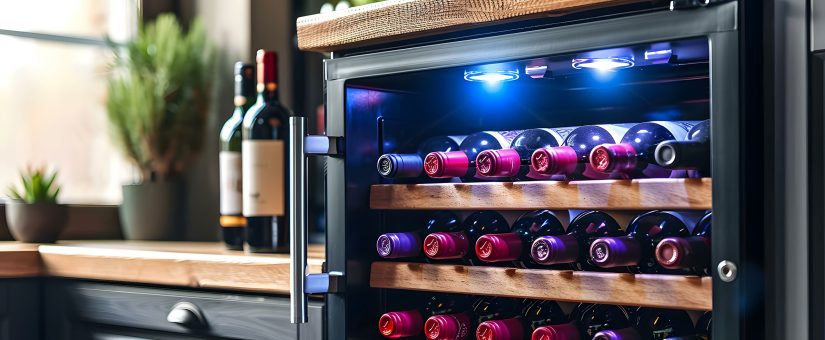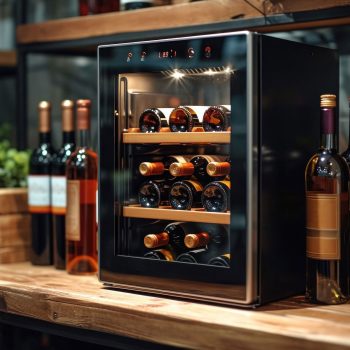
Storing Wine: Wine Coolers and Wine Refrigerators
Part 1 of a Two-part Article
The terms wine cooler and wine refrigerator are often used interchangeably, but they have distinct differences that can significantly impact how your wine is stored. In this two-part series, we discuss aspects of wine coolers and wine refrigerators such as size, cooling technology, operating temperature, and design. This will help beginners and enthusiasts alike to make informed choices, so that your wine investment improves with age.
Cooling Technology
Wine Coolers: Most wine coolers use thermoelectric cooling technology. This method is quieter and has fewer moving parts compared to compressor-based systems. Thermoelectric coolers do not use circulating liquids and have no leakage issues. In a controlled environment, they maintain a regular temperature. In a uncontrolled environment, like a garage or unconditioned storage room, temperatures may vary throughout the day when the weather is hot.
Wine Refrigerators: These use compressor cooling technology, like conventional refrigerators. This method is generally more efficient, but can produce a low buzzing sound when the compressor operates. Consider a wine refrigerator a must if you plan on using an unconditioned area for storage.
Sizing the Wine Cabinet
Wine Coolers: Traditionally, wine coolers are smaller, portable units that hold between 10 to 18 bottles of wine. As the thermoelectric cooling system becomes more popular, wine coolers are now larger, with some models accommodating more bottles.
Wine Refrigerators: These are generally larger than wine coolers and can hold over 30 bottles. Despite their larger capacity, they are still smaller than standard food refrigerators. There are exceptions, of course, and many wine cabinets for true connoisseur are the size of single or double closets.
Operating Temperature
Wine Coolers: These units typically maintain temperatures above 45 degrees Fahrenheit (7.2 degrees Celsius), as wine is not usually consumed at very low temperatures.
Wine Refrigerators: These can be set to lower temperatures, making them suitable for storing a wider range of beverages. Available dual-zone models allow different temperature settings for red and white wines. Generally, white wines are stored between 45 to 50 degrees Fahrenheit (7.2 to 10 degrees Celsius), while red wines are stored between 50 to 65 degrees Fahrenheit (10 to 18.3 degrees Celsius). A two-cabinet refrigerator can also be used for lagering beer on one side at a cooler temperature while storing wine on the other, a must for the home brewer who is also a wine maker.
Design Considerations
When choosing between a wine cooler and a wine refrigerator, consider design preferences and practical needs:
- Storage Capacity – determine how many bottles you need to chill at once.
- Shelf Design – decide if you want sliding shelves with vertical storage for partially consumed bottles.
- Door Transparency – a transparent door can showcase your collection, but may expose your wine to light.
- Additional Uses – consider if you plan to store items other than wine, such as cheese or beer, which may require lower temperatures. (Barrel-aged beers are the exception, as they do just fine at wine temperatures.)
Prepare Ahead
Understanding the differences between wine coolers and wine refrigerators can help you make an informed decision based on your specific needs and preferences. By considering how you want to store and access your wine collection, you’ll avoid the need to purchase another wine cooler or refrigerator later on to accommodate your needs. For more information, for repairs on your cooler or refrigerator, and for help to explore a range of options, contact River City Appliance.
- Posted by River City Appliance Blog
- On June 20, 2024
- 0 Comment




0 Comments